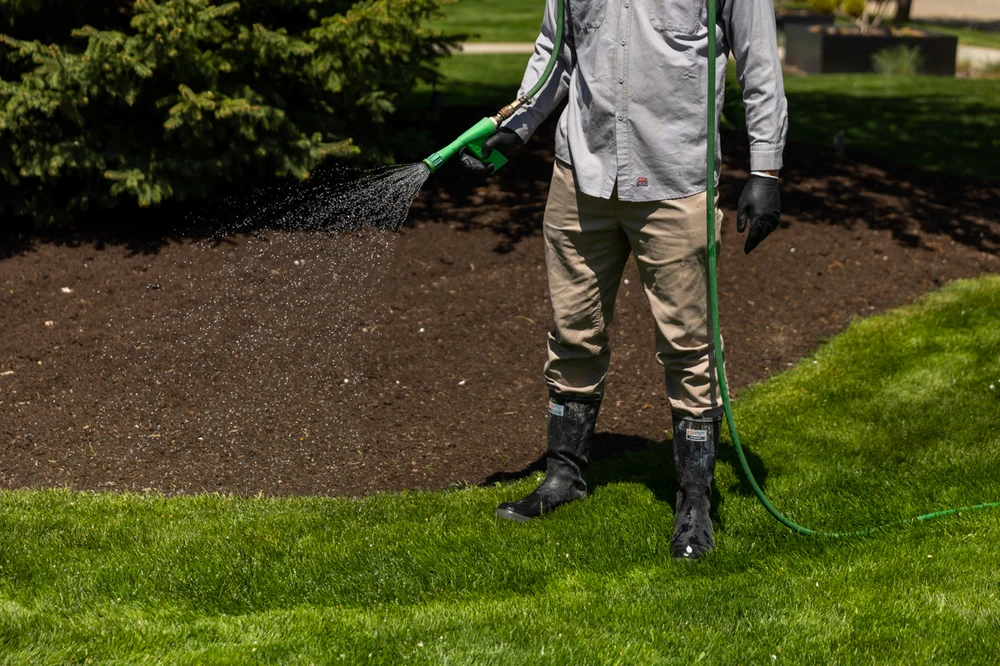
Weeds are more than just an eyesore—they steal water, sunlight, and nutrients from your grass. Left untreated, they can take over quickly, choking out healthy turf and ruining your lawn’s appearance.
The key to maintaining a thick, weed-free lawn lies in timing and treatment—and that’s where pre- and post-emergent weed control come in. Understanding the difference between the two can make or break your lawn’s health.
1. What Is Pre-Emergent Weed Control?
Pre-emergent weed control targets weeds before they even sprout. These treatments create a protective barrier in the soil that prevents weed seeds from germinating.
Best for preventing:
- Crabgrass
- Dandelions
- Chickweed
- Annual bluegrass (Poa annua)
When to apply:
- Early spring (before soil temps reach 55°F)
- Early fall for winter annual weeds
Applying pre-emergent too late—after seeds have already germinated—won’t stop weeds from growing. That’s why proper timing is critical for success.
Pro Tip: Anointed Lawn Care uses season-timed pre-emergent applications customized for Texas weather, ensuring your lawn stays weed-free from the start.
2. What Is Post-Emergent Weed Control?
Post-emergent weed control is used to eliminate existing weeds that have already broken the surface. These treatments are absorbed through leaves and stems, targeting weeds down to the root.
Best for controlling:
- Clover
- Nutsedge
- Spurge
- Broadleaf weeds
- Grassy weeds that escaped earlier prevention
When to apply:
- Any time weeds are visible and actively growing
- Typically during warm months when lawns are in full growth
3. Why Both Are Essential
Pre- and post-emergents work best together—one prevents, the other eliminates.
Think of it like a two-step defense system:
- Pre-emergents stop new weeds before they start.
- Post-emergents clean up any that slip through.
Without both, you risk ongoing weed cycles that can undo months of lawn care progress.
4. The Dangers of Skipping Weed Control
Ignoring weed prevention can quickly lead to:
- Thinner grass due to nutrient competition
- Higher pest activity
- Soil imbalance from aggressive root systems
- Costly future repairs or re-sodding
Weeds also make lawns more susceptible to fungus and drought stress, reducing curb appeal and long-term turf health.
5. The Role of Professional Lawn Care
DIY weed control can be tricky—using the wrong product, rate, or timing can actually harm your lawn.
Professional technicians know exactly:
- Which product works for your specific grass type
- The ideal seasonal schedule
- How to apply safely and evenly
Anointed Lawn Care uses precise, science-based formulas and pro-grade sprayers to deliver consistent results without damaging your turf.
6. How Weed Control Fits Into a Year-Round Program
Weed management isn’t a one-time job—it’s part of a complete lawn health plan.
A typical annual program includes:
- Spring: Pre-emergent + fertilization
- Summer: Post-emergent + insect control
- Fall: Second round of pre-emergent + aeration
- Winter: Soil conditioning + disease prevention
Each step strengthens your lawn’s natural resistance, ensuring thick, green grass that naturally outcompetes weeds.
7. The Texas Timing Advantage
Texas lawns face unique challenges due to long growing seasons and varying soil types. Timing treatments correctly around local conditions is key.
That’s why Anointed Lawn Care’s local expertise makes such a difference—they know exactly when to apply pre- and post-emergents for the Fort Worth and North Texas region’s climate and grass types.

Weeds don’t stand a chance when prevention and treatment work hand in hand. With consistent pre- and post-emergent weed control, your lawn stays vibrant, dense, and worry-free all year long.
Take control of your yard—contact Anointed Lawn Care today for expert weed management and a free lawn health evaluation!









